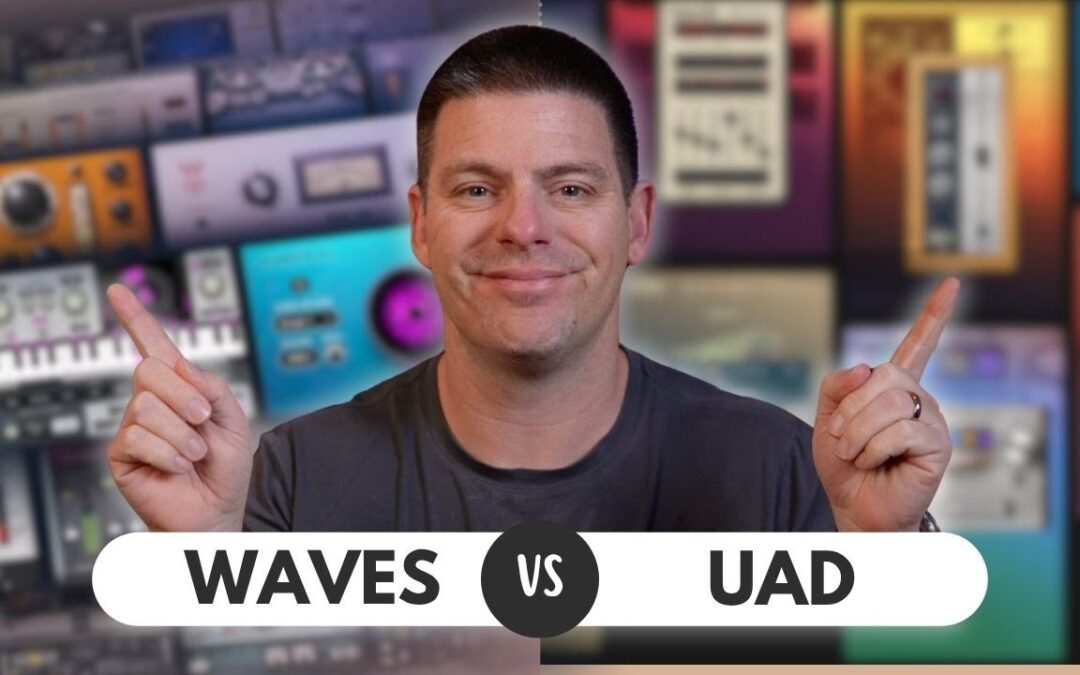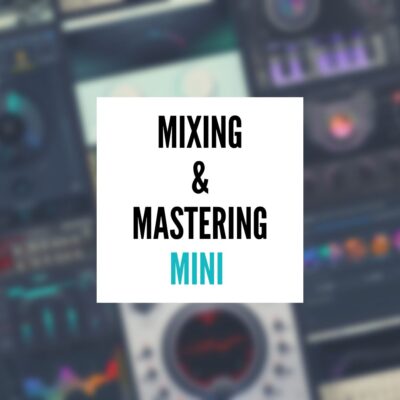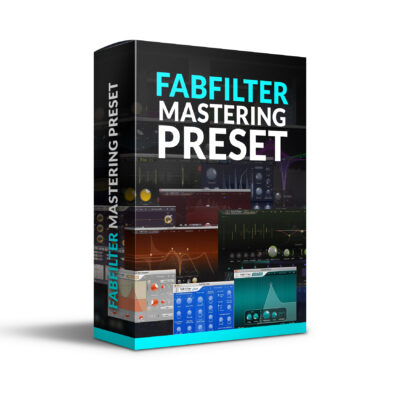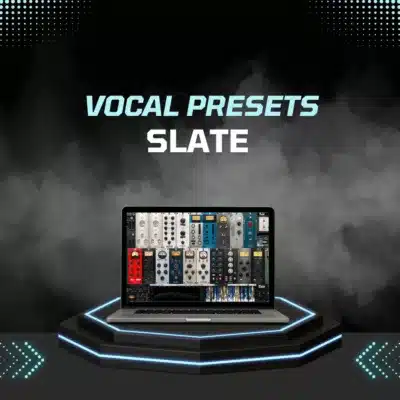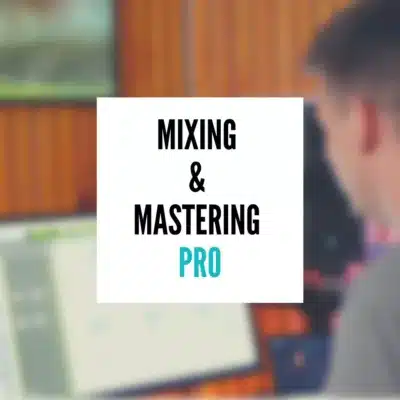Plugin subscriptions have taken over the audio production world, and if you’re serious about vocal mixing, you’ve probably considered both Waves and UAD. But with monthly fees adding up quickly, which subscription actually delivers the tools you need for radio-ready vocals?
I decided to find out by mixing the same vocal two different ways—once using only Waves subscription plugins, and once using only UAD subscription plugins. No outside tools, no cheating. Just a real-world test to see which bundle gives you better results.
The Test Setup
For this comparison, I used a track called “Patch It” by Kaygen Miles—a well-recorded vocal tracked at home, but dry and unprocessed. The recording quality was solid, exactly the kind of material you’d work with in a real session, but it needed the full treatment to sound finished. To keep things fair, I compared the Waves Essential Package against the UAD subscription since they’re priced similarly. This wasn’t about unlimited budgets—this was about what you actually get for your monthly payment.
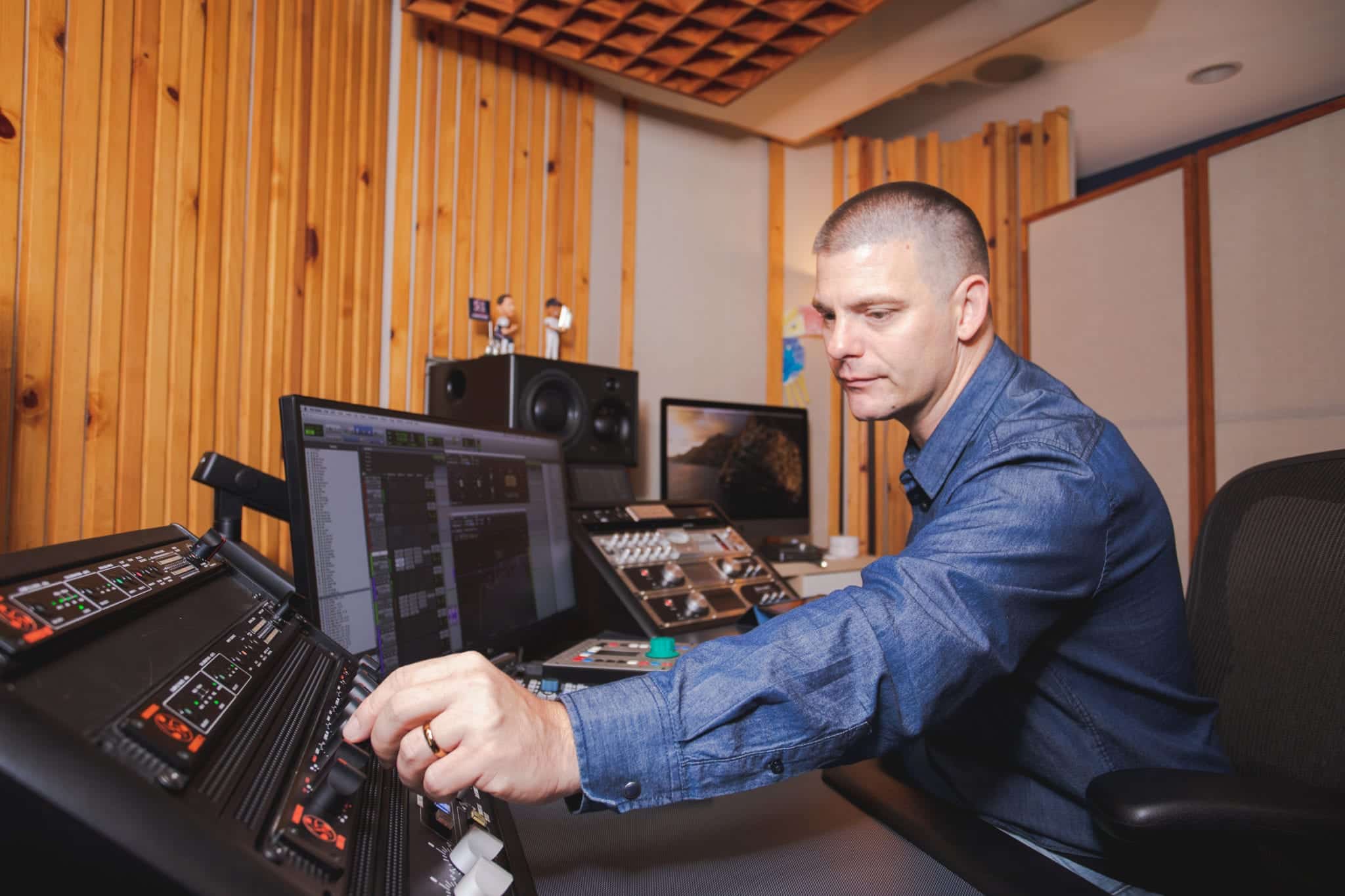
Ready to Release your music on Spotify?
Get 10% off your first mix & master and enjoy Unlimited Revisions until it sounds perfect.
Building the Waves Mix
I started with the Waves bundle, and right away I felt at home. The workflow was exactly what I’m used to, with everything I needed right where I expected it. For send effects, I set up the Manny Marroquin Reverb for both room and plate sounds—it’s a reverb I reach for constantly in my everyday mixes. For width, I used the Waves Doubler to create that subtle micro-shift effect that makes vocals feel larger without being obvious about it.
The vocal chain began with an REQ 6 handling the cleanup duties. I cut the low end rumble with a high-pass filter, then used a low shelf to tame some of the proximity effect that was adding unnecessary warmth. After brightening the vocal later in the chain, I noticed a harsh frequency poking out around 7400 Hz, so I added a surgical notch cutting about 8 dB. The difference was immediate—the vocal sounded warmer and less aggressive without losing any of its presence.
Next came the CLA 76, one of my all-time favorite vocal compressors. I set it with a fast release and medium attack, pushing it hard enough to get around 5 to 7 dB of gain reduction. For R&B and pop vocals especially, I love that compressed, upfront sound that really puts the vocal in your face. Running the compressor after the initial EQ cleanup meant it was only working on the frequencies I actually wanted, not wasting energy on low-end rumble that would be gone in the final mix anyway.
The C4 multiband compressor came next, adding another layer of control over the proximity effect and those piercing mid-range frequencies. It wasn’t moving dramatically—just a dB here and there—but the cumulative effect was a vocal that sat more comfortably in the mix without any harsh surprises.
Then came the Pultec, because honestly, why not? It’s one of the best EQs ever made, and the plugin version captures that magic. I used a wide bandwidth boost at 10k with the gain around four, and it opened up the vocal with that signature Pultec shine that just sounds right. There’s something about the way a Pultec adds air that feels musical rather than clinical.
The CLA Vocals plugin came next, and I know this one gets mixed reactions. Some engineers love it, others hate it, but I genuinely think it’s one of the most useful vocal plugins out there. I used just a touch of slap delay and set the stereo control to negative 10. Even though the knob looks like it’s turned all the way down, it still creates this subtle width that makes the vocal feel bigger and more polished. Sometimes this plugin alone can reduce how much reverb and delay you need from your sends.
Finally, the RDeEsser handled sibilance control, doing exactly what you’d expect a de-esser to do. Once I brought in the send effects—the room reverb, plate, and doubler—the vocal was sitting exactly where I wanted it. The Waves chain had everything I needed, and the workflow was fast and intuitive.
Tackling the UAD Mix
Moving over to the UAD session, I was excited to work with their legendary analog modeling. For sends, I chose the Lexicon 224 using the dark room preset—it’s an incredible reverb with a character that’s hard to match. The UAD Pure Plate Reverb gave me the plate sound with about one and a half seconds of decay, some pre-delay, and a low cut at 180 Hz to keep things clean. For width, I used the Studio D, which is UAD’s version of the classic Dimension D by Roland, with buttons one, two, and four engaged.
The vocal chain started with the SSL channel strip, where I applied a low cut around 200 Hz and a low shelf around 350 to 400 Hz, cutting about 1.5 dB to clean up the proximity effect and low rumble, much like I did in the Waves version. I also added a small boost around 3k for presence. The 1176 Blue Stripe came next, delivering that classic FET compression sound that’s so similar to what the CLA 76 was doing in the first mix.
But here’s where I hit my first roadblock. UAD doesn’t include a parametric EQ in their subscription bundle, which honestly surprised me. In the Waves mix, I’d used the REQ 6 to surgically notch out that harsh frequency at 7400 Hz, but I had no equivalent tool in the UAD package. I had no choice but to reach for my DAW’s stock EQ to make those cuts. I also ended up cleaning up some low-mid buildup around 280 Hz with the same plugin. It felt like cheating, but it was necessary—that frequency was genuinely painful and had to go.
The UAD Pultec came next, and I have to say, it sounds absolutely gorgeous. I boosted at 12k instead of 10k, and pushed the gain to five instead of four. I’m not entirely sure why my ears led me to a higher frequency and more gain, but that’s what sounded right in the moment. The wide bandwidth setting gave me that smooth, musical enhancement that Pultecs are famous for.
The final plugin was the Topline Vocal EQ, and here’s the thing—I didn’t choose this plugin because I loved it. I chose it because UAD’s subscription doesn’t include a dedicated de-esser, which is honestly baffling for a vocal-focused workflow. The Topline plugin has a de-essing function built in, so I used that. I also engaged a bit of slap delay and some reverb to approximate what the CLA Vocals plugin had given me in the Waves mix. It worked, but it felt like another workaround rather than a deliberate choice.
Once I brought in all the sends, the UAD vocal sounded fantastic. The analog modeling really shines through, and there’s a warmth and character that’s hard to describe. But getting there required creative problem-solving that the Waves mix simply didn’t.
The Listening Test
After finishing both mixes, I did a blind A/B comparison. Both vocals sounded professional and ready for release, but they had different flavors. Version A had a smooth, polished quality with everything sitting cohesively. Version B had incredible analog warmth and character, but the workarounds I’d needed to employ made the workflow feel less complete.
Version A was the Waves mix. Version B was UAD.

Want a FREE Waves Vocal Preset?
This free Waves vocal preset works with Ableton, Logic Pro, FL Studio, Pro Tools, Studio One, and Waves StudioRack. It only uses plugins included in the Waves Gold Bundle, so that’s all you need to get started.
The Verdict
Both subscriptions can absolutely deliver professional vocal mixes, but they’re designed for different engineers with different priorities. The Waves subscription feels like a complete solution. Everything you need is right there—parametric EQ, multiband compression, dedicated de-esser, and purpose-built vocal processors like CLA Vocals. The workflow is fast, intuitive, and doesn’t require hunting for workarounds or supplementing with stock plugins.
The UAD subscription, on the other hand, offers some of the best analog modeling you can get in plugin form. The Lexicon 224 is stunning, the 1176 and Pultec sound absolutely authentic, and there’s a vintage warmth that’s genuinely special. But the missing basics—no parametric EQ, no dedicated de-esser—feel like significant oversights. These aren’t luxury features; they’re fundamental mixing tools, and having to rely on stock plugins to fill those gaps undermines the value of the subscription.
If you’re looking for a complete, self-contained mixing solution that lets you work fast without compromises, the Waves subscription is the smarter choice. If you’re chasing the absolute best analog character and you’re comfortable supplementing with your DAW’s stock tools for basic functions, UAD sounds incredible but feels incomplete.
For most engineers, especially those starting out or anyone who values efficiency, Waves offers better value. You’re paying for a complete toolkit, not just great-sounding pieces of one.

